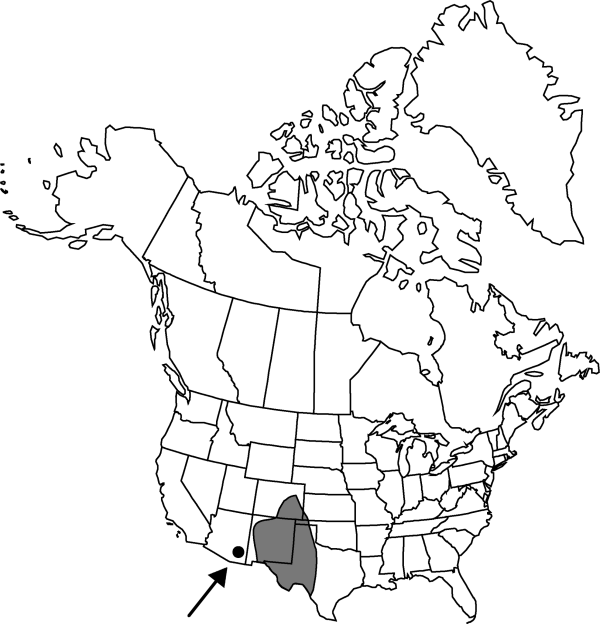Cylindropuntia imbricata
in C. Backeberg and F. M. Knuth, Kaktus-ABC, 125. 1935.
Trees, with short trunks, or large shrubs, widely branching, (1–) 1.5–2.5 (–5) m. Stem segments firmly attached, whorled or subwhorled, gray-green, cylindric to weakly clavate, 10–40 × 1.5–4 cm; tubercles very prominent, widely spaced, (1.5–) 2–5 cm; areoles elliptic, 5–8× 3–4 mm; wool yellow to tan, aging gray to black. Spines (5–) 8–15 (–30) per areole or spineless to nearly spineless, usually at most areoles, not obscuring stems, spreading, straight or slightly curved, silver to yellow to usually ± red or tan to brown, stout, terete or sometimes flattened basally, 8–30 (–40) mm subequal; sheaths silver to yellow to usually tan to dirty white, yellow-tipped. Glochids in dense adaxial tuft, pale-yellow, 0.5–3 mm. Flowers: inner tepals dark-pink to magenta to red-magenta, obovate, apiculate, 15–35 mm; filaments green basally to pink to magenta distally; anthers yellow; style light green basally or pink to red-magenta apically; stigma lobes green or cream. Fruits not proliferating, yellow, obovoid, 24–45 × 20–40 mm, fleshy, tuberculate, spineless; areoles 18–30; tubercles nearly equal in length or longer in proximal portion of fruit, prominent (occasionally smooth at maturity); umbilicus 7–14 mm deep. Seeds yellow-tan, subcircular to angled, warped, 2.5–4 mm diam., sides smooth to slightly lumpy; girdle usually narrow, not protruding.
Distribution

Ariz., Colo., Kans., N.Mex., Okla., Tex., n Mexico
Discussion
Varieties 2+ (2 in the flora).
Selected References
None.
Key
| 1 | Plants trees 3-5 m; stem segments 12-40 cm; tubercles widely spaced; spines, and sheaths when present, usually tan to dirty white or ± yellow | Cylindropuntia imbricata var. imbricata |
| 1 | Plants erect shrubs to 1.2 m; stem segments 10-20 cm; tubercles narrowly spaced; spines and sheaths silvery | Cylindropuntia imbricata var. argentea |